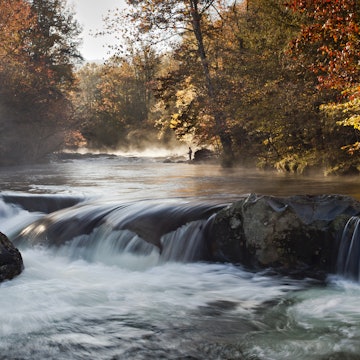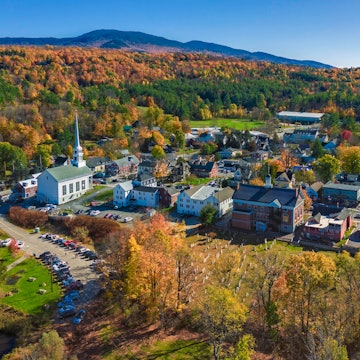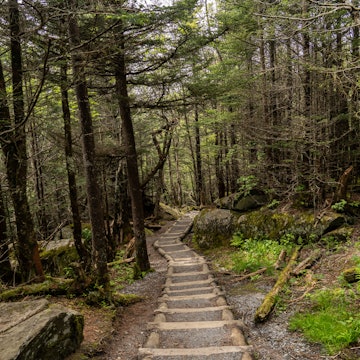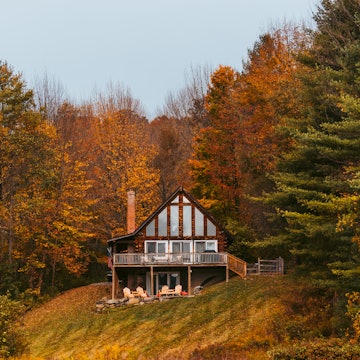
11 of the best free things to do in Virginia: experience the Old Dominion for nothing

Apr 23, 2022 • 13 min read
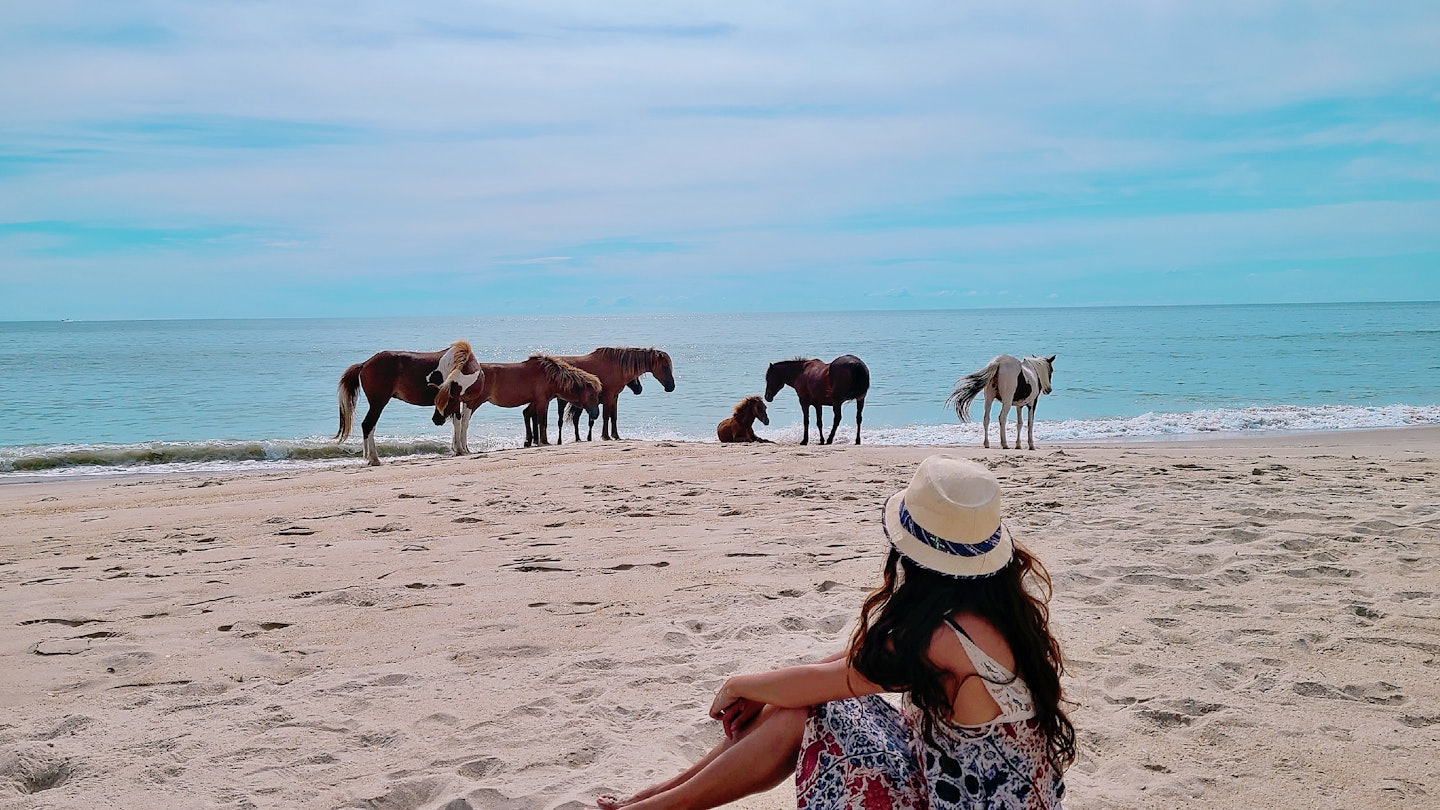
From family days out in historic towns to wonderful scenic drives, here are the best free things to do in Virginia © Vicky Faye Aquino / Shutterstock
With a rich landscape filled with miles of beachy coastline, misty mountain peaks, prerevolutionary villages, and famous historic sites, Virginia presents a wealth of things to see and do. And while there’s plenty you can pay for the privilege (and worth every dollar), many are fortunately free.
We’ve scoped out 11 of the best free things to see and do in the Old Dominion, from the Northern Virginia suburbs to the Appalachian Mountains, to the sun-drenched Eastern Shore and beyond. Wild horses, giant airplanes, a buzzy beach boardwalk, and threatened piping plovers are all part of the fun.
See wild horses on Assateague Island
Wild horses roam the wind-swept, 37-mile-long barrier isle of Assateague, the southern portion of which belongs to Virginia (northern is Maryland). Some say they’re descendants of horses that swam ashore after their 17th-century Spanish galleons sank offshore — though more likely, they come from horses that 17th-century colonists released on the island to escape a mainland fence tax. Either way, these short, stout horses, sometimes called ponies for their small stature, munch salt marsh plants along the beaches and wander through the coastal woods, marshes, and dunes. Every July for the past 90-plus years, “saltwater cowboys” round up the foals to swim across the channel to neighboring Chincoteague, always a fun event to watch.
But there’s much more to see and do on Assateague, including miles of untrammeled hiking and biking trails, crabbing, fishing, swimming, shell hunting, watching migratory birds (including the glorious snow geese and threatened piping plover), and simply lying on the sandy beach. Note that there’s a fee to drive into Assateague National Wildlife Refuge, but walkers and bikers enter for free. Campsites cost $30 a night.
Embrace nature at the Great Dismal Swamp
Stories of Blackbeard and other marauding pirates swirl in the primeval mists of the Great Dismal Swamp. This nearly 113,000-acre refuge on the Virginia–North Carolina border near Norfolk is centered on a remarkably shallow, cypress-fringed lake — at 3100 acres, it’s only 6ft deep.
Enslaved people hid out here en route to freedom, earning it the designation as an Underground Railroad Network to Freedom site. George Washington visited too, scheming up plans to drain it for agriculture — he failed, though he helped build a 22-mile canal linking the Chesapeake with Albemarle Sound, dug mostly by enslaved laborers. Opened in 1805, the Dismal Swamp Canal remains the nation’s oldest continually operated artificial canal.
But the best reason to come to this gigantic swamp forest today is because it’s a nature lover’s paradise, with hiking and biking trails, an accessible boardwalk, and kayaking, fishing, and camping. Bobcats, black bear, otters, and more than 220 varieties of birds thrive.
And while there also are snakes, mosquitoes — and, yes, alligators — that might be considered "dismal," its name is a tad overkill. Indeed, the “great” comes from the swamp’s once vast size (over 1 million acres, at one point in time), and the “dismal” likely refers to the early English settlers’ word meaning “swamp” or “morass.”

Be wowed by giant aircraft at the Steven F Udvar-Hazy Center
What do you do when your aircraft and spacecraft are too large to fit in the Smithsonian National Air and Space Museum? Put them in the annex in Chantilly, near Washington Dulles International Airport, of course. At the massive Steven F Udvar-Hazy Center, comprising two hangars, airplanes and spacecraft hang on the ceiling, rise from the floor, and scatter about right and left. You can check out the Space Shuttle Discovery, considered the workhorse of the shuttle fleet; the B-29 Enola Gay, which dropped the atomic bomb on Hiroshima at the end of World War II; the Mobile Quarantine Facility, a converted Airstream trailer that temporarily housed Apollo 11 astronauts Neil Armstrong, Buzz Aldrin, and Michael Collins after their successful mission to the Moon; and much, much more. There’s also an IMAX theater (for a price) and an observation tower with 360-degree views to watch planes land and take off from Dulles. Note that while the museum is free, there is a charge for parking (it’s free after 4pm).
Bike the Virginia Creeper Trail
Bopping down Whitetop Mountain in southwestern Virginia in the heart of Jefferson National Forest, the 34.3-mile Virginia Creeper Trail opens up some of the state’s most breathtaking landscapes. You’ll zip through forests, meadows, and highlands, across 47 bridges and trestles spanning gurgling mountain brooks. A former rail-trail named after the steam engine that crept up the mountainside into the Iron Mountains, it’s perfect for easy biking and hiking (it’s mostly downhill), with plenty of fishing and birdwatching along the way.
The cute town of Damascus is a good place to stop for lunch, while Abingdon, a few miles off the trail’s end, has B&Bs (and the elegant Martha Washington Inn), restaurants, and a visitor center. Abingdon is also home to the Barter Theatre, a professional theater showcasing more than 25 productions a year. While not free, the theater is named after the Depression-era practice of bartering for admission (they called it trading ham for Hamlet).
Shuttle services can take you and your bike to the top of Whitetop for a price; bike rentals are available, too.
Other fabulous (and free) biking trails in Virginia include the 45-mile Washington and Old Dominion (W&OD) Trail, following an old railroad line from Arlington’s suburban-scape to Loudoun County’s rolling countryside; the 18-mile Mount Vernon Trail from Arlington to Mount Vernon, meandering along the Potomac; and the James River Heritage Trail, along the James River in Richmond.

Relive prerevolutionary history at Colonial Williamsburg
Much of the nation’s most important prerevolutionary history unfolded in Williamsburg, when it served as the capital of the Colony and Commonwealth of Virginia between 1699 and 1780. The historic area has been meticulously re-created with brick buildings, costumed reenactors, and special events bringing the stories to life. You have to buy a ticket to enjoy some activities, including participating in tours and entering many of the historic buildings — but there’s no fee just to stroll the streets and take in the bygone ambiance, peeking into shops and asking interpreters questions.
And not all the sights charge admission. Bruton Parish Church in the heart of town, for example, provides a free spot for quiet reflection as it has for 300 years. Williamsburg Botanical Garden bursts into bloom through the seasons — a perfect place to picnic. There’s also a robust schedule of free arts fairs and music festivals. In summer, free concerts play throughout Colonial Williamsburg, including the Summer Breeze Concert Series near Merchants Square.
Pay your respects at Arlington National Cemetery
Somber and serene, Arlington National Cemetery honors more than 400,000 soldiers who have served in every American war from the Revolution to present-day conflicts, as well as many prominent Americans — including Supreme Court Justice Ruth Bader Ginsburg, General John Pershing, and heavyweight boxing champion Joe Louis.
A shuttle tour stops at various sites, or you can walk (warning: it’s hilly!). Don’t miss the changing of the guard at the Tomb of the Unknowns and the eternal flame at JFK’s gravesite (where he’s buried alongside his wife, Jacqueline, his brothers Robert and Edward, and two children). All presidents are eligible to be buried at Arlington, but to date, only two are here: JFK and William Howard Taft.
Rising on a knoll is Arlington House, the mansion Robert E. Lee left when he joined the Confederacy (the Union used the grounds as a burial site to ensure the Lees would never return). It’s been meticulously reinterpreted to detail the stories of enslaved individuals who helped build the residence and who worked here.
A trail wanders north to the imposing Iwo Jima Memorial (more formally called the US Marine Corps War Memorial), passing by a priceless view of DC with the Lincoln Memorial, Washington Monument, and US Capitol neatly lined up (a popular place among locals — and professional photographers — for 4th of July fireworks-watching).

Take a slow drive on the Blue Ridge Parkway
At a max speed of 45mph, the sinewy, two-lane Blue Ridge Parkway forces you to slow down to the pace of another time. Not that you need any enticement. Wandering atop the misty southern Appalachians, the scenic byway opens up stunning mountain-and-valley views, splashy waterfalls, and wildlife-filled forests, with hiking, camping, and picnicking along the way.
Built in the 1930s for scenic driving, the parkway actually runs for 465 miles between Shenandoah National Park at Rocky Gap, Virginia, in the north and Great Smoky Mountains National Park at Cherokee, North Carolina, in the south — the Virginia portion is about 200 miles. Must-stops include historic Mabry Mill at milepost 176, perhaps the planet’s most scenic lakeside mill; the neon-lit Roanoke Star, atop Mill Mountain in Roanoke, just off milepost 120 (a really fun hike); and the Peaks of Otter, overlooking a mirrorlike lake at milepost 85.6.
Another don’t-miss scenic drive is the 25-mile George Washington Memorial Parkway between McLean and Mount Vernon, offering magnificent views of DC’s national monuments looming above the shimmery Potomac, along with a year-round parade of blooming flowers and trees.
Revisit the Civil War at Richmond National Battlefield Park
Virginia emerged as a crossroads of North–South conflict during the Civil War, with Richmond the capital of the Confederacy. Richmond National Battlefield Park incorporates 13 separate sites in the Richmond area where determined warfare took place in the 1860s in the Union’s attempt to capture the capital city. Wrap your head around it all at Tredegar Iron Works, the park’s main visitor center and museum in downtown Richmond. There are more than 500 artifacts in two galleries, and you can pick up maps and other materials to discover nearby battlefields along an 80-mile driving route, including Cold Harbor and Gaines’ Mill.
The ironworks itself date from 1837, going on to make Richmond a hub of iron manufacturing. The factory provided artillery and ammunition that supported the South, and after the Civil War, helped rebuild the ruined South. It made munitions for both World Wars before closing down in the mid-20th century.
Note that the visitor center is free, but it costs $3 to park in the center’s parking lot. It’s free next door at the Belle Island lot.
Virginia contains several other major Civil War battlefields, which are free to enter, including Petersburg; Fredericksburg & Spotsylvania; and Manassas. The Civil War ended at Appomattox Court House.

Hike sections of the Appalachian Trail
One of the nation’s most fabled hiking trails, the 2200-mile Appalachian Trail (aka the AT) skitters atop the Appalachians between Georgia and Maine. It passes 544 miles through Virginia, more miles than any other state. A hundred miles wind through Shenandoah National Park, including hikes to Compton Creek and Fort Windham Rocks — though if you don’t want to walk from the park entrance, you must pay to drive into the park. Fortunately, free options are just as spectacular, especially in Mount Rogers National Recreation Area and the Washington and Jefferson National Forests, filled with shadowy forests, surging waterfalls, deep gorges and billowy rhododendron in late spring.
You can’t go wrong with the 5.6-mile Angels Rest Overlook hike, near the town of Pearisburg, offering stunning views over the New River Valley; the 3.6-mile trek in the Priest Wilderness, sprinkled with bucolic springs and streams; and the 4-mile Wilburn Ridge hike in Grayson Highlands, featuring misty peaks and wild horses.
Wander Old Town Alexandria
Roaming Old Town’s cobbled streets, edged with historic row houses shaded by gnarled oak trees, you wouldn’t be surprised to come across onetime frequenter George Washington himself. He lived just down the road at Mount Vernon, after all, and spent much time in town. Founded in 1749 by Scottish merchants, Alexandria thrived as a busy seaport for centuries, explaining the wealth of beautiful buildings here. To this day, more than 200 structures survive from Washington’s time — kept up thanks to a serious historic preservation program.
You can visit Christ Church for free and sit in the same pew where Washington once worshiped. You have to pay to visit both Carlyle House, an 18th-century Georgian manor, and Gadsby’s Tavern Museum, where five early US presidents dined, though it’s interesting just to stand outside and take it all in. Outside the tavern, peer down into the ice well, which once provided the tavern with a ready supply of ice to make day’s latest dessert craze: ice cream.
King Street is the main road bisecting Old Town, filled with trendy restaurants and boutiques. The King Street Trolley, which runs up and down the street from the Metro, is free. Whatever you do, be sure to find yourself at the foot of King Street, along the Potomac River. Behind the Torpedo Factory — an actual former factory that produced torpedoes, today housing 82 artist studios — musicians and jugglers often entertain along the Potomac waterfront. Paths edge the river, offering more scenic places to stroll.
About a mile south of here, you can visit the Contrabands and Freedom Cemetery, honoring 1800 people of African descent who were buried here during and following the Civil War. Nearby, you’ll find the South Boundary Stone, the nation’s first federal monument, laid in 1791 by Benjamin Banneker as he helped set the boundaries for the new national capital of Washington, DC. It’s beneath the sea wall near Jones Point Lighthouse — a gorgeous place on the river.
Virginia is graced with several other historic towns with the same prerevolutionary flavor, including Fredericksburg; Yorktown; Staunton; and Winchester.
Sun-worship and hit the trails at Virginia Beach
The beach is always a good idea, and Virginia Beach — the only city with a coastline on both the Atlantic and Chesapeake Bay — is the perfect beachy antidote, with a multiple of free, white-sand beaches, each with its own pizzazz. For starters, you have secluded, sand-dune-backed Sandbridge Beach; family-friendly Chesapeake Bay Beach; and Croatan Beach, a favorite of local surfers. Pack a picnic and a beach ball and make it a day.
But there are more free things to do here than just play in the sand. You can stroll the buzzy Virginia Beach Boardwalk, with its free amusement park and free summer concerts at the 31st Street Stage. First Landing State Park, named for the English settlers who landed here in 1607 before settling Jamestown, has crabbing, biking, and picnicking along one of the state’s most gorgeous shorelines.
You can also hike along several trails, including one through a bald cypress swamp and another through high dunes. And yes, there’s a fabulous beach here, too. Trails at Back Bay National Wildlife Refuge open up freshwater marshes and woodlands flitting with migrating birds. From here, you can walk into secluded False Cape State Park, perched on a narrow spit between Back Bay and the Atlantic Ocean that’s considered one of the East Coast’s last unspoiled places. Several hiking trails take in supreme coastal overlooks. Note that First Landing and Back Bay both charge a small parking fee, but False Cape is free (no cars allowed; you have to walk or bike in via Back Bay).
All this said, Virginia Beach isn’t the only beach game in town. With miles of shoreline along the Atlantic Ocean, the Chesapeake, and the Potomac, other sunshiny escapes in Virginia include Colonial Beach along the Northern Neck; the Cape Charles beachfront on the Eastern Shore; and Norfolk’s Ocean View beaches.
You might also like:
7 incredibly scenic hikes in Virginia
The top 8 beaches in Virginia
Explore Richmond, Virginia, without spending a dime








